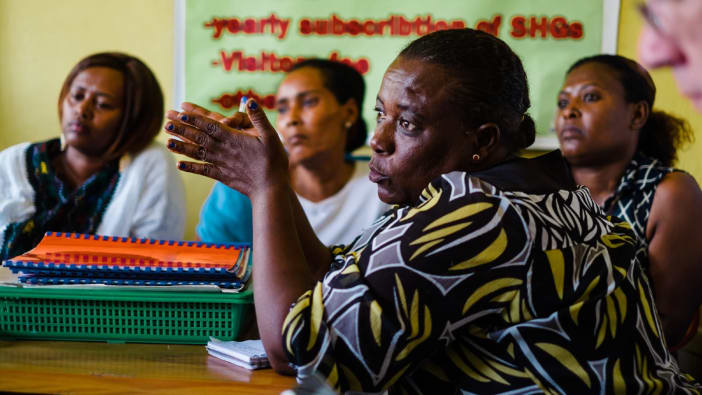The Animator needs to understand how people in the community see their problems. Here is a very simple exercise which helps participants to appreciate that we all see and interpret things differently.
Sit four volunteers around a table and place on the table a large sheet with the number 3 drawn on it. Ask the volunteers what they can see. Each will see something different – one will see a 3, another an M, another a W and the last, an E. A useful discussion can follow, using these questions:
- What is happening?
- Why is it that each person sees something different?
- How does a person get a certain viewpoint?
Can you think of examples in real life where people look at the same situation in different ways?
Changes in attitudes
How do our attitudes to problems affect what we do? Here is an exercise which helps participants to identify different attitudes and place them on a scale which goes from ‘no action’ to ‘action’ (see below).
With the group, think up some imaginary statements that people make in your community.
Here are some to begin with:
- We have to die sometime.
- I would like to take the children to the clinic but it is too far.
- I know the cattle need more fodder, but I don’t have enough land.
- Beans are too expensive to buy in the market.
- I drank this water, and my father did the same before me and we have lived long lives.
- It is a lot of work for a little improvement.
- If we were all to collect stones it will only take two days to have all we need.
- I could leave my children with the neighbour so that I could go to the clinic.
- My grandparents and parents always planted maize this way.
- The trees we planted grew so well we have enough for our own needs and are able to sell some timber.
Write these and any other comments you can think of on pieces of paper. Using the Action Scale steps below, read a few examples out and together decide which step each comment would best fit. Divide the remaining comments between the participants and let them try to match them with the appropriate step.
When all the statements have been matched, read through them together to check if any are in the wrong place. (Sometimes it can be difficult to decide exactly which step they belong to – don’t spend too long deciding between steps that are close together).
Adapted from The Facilitators Resource Manual Part II – Skills for the Trainer – by Uganda CBHCA, PO Box 325, Entebbe, Uganda.








